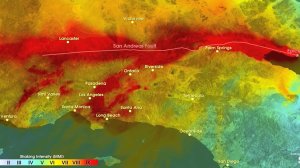In a fast-growing Inland Empire churning out new housing tracts, the city of Redlands is a throwback to an older, more regal era.

The college town is graced by historic mansions, old orange groves and a vintage downtown that stands in deep contrast to the region’s big-box shopping centers and drive-thru eateries. The town center is defined by century-old buildings filled with children’s boutiques, bakeries and cafes serving gourmet waffle sandwiches out of brick-lined alleys.
But danger lurks amid the idyllic charm of these brick buildings: As many as 74 in the city are not retrofitted to withstand a major earthquake, putting the public at risk should the bricks start to topple onto sidewalks, cars and pedestrians.
As many as 640 buildings in more than a dozen Inland Empire cities including Riverside, Pomona and San Bernardino have been marked as dangerous — but remain unretrofitted despite decades of warning, according to a Times analysis of the latest building and safety records. These cities are far behind coastal regions of California, which have retrofitted thousands of buildings after devastating earthquakes exposed how deadly they can be.
Read the full story on LATimes.com.












